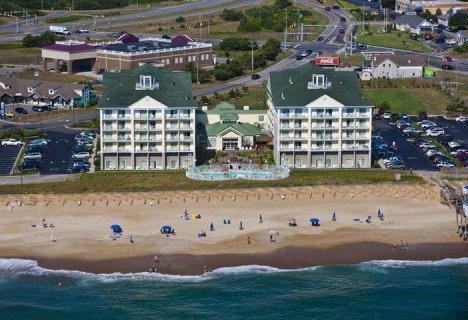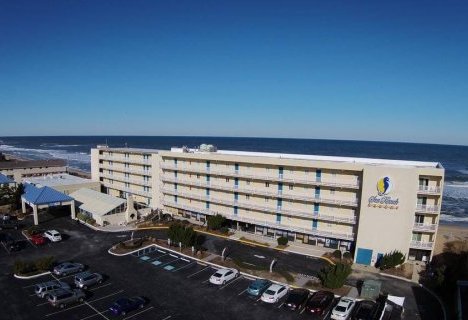One of the oldest settlement areas of what evolved into the United States, the Outer Banks is brimming with maritime culture and wide open spaces within a pleasant, subtropical climate. Once a haven for pirates and shipwreck hunters, today the Outer Banks is a prime destination for fishing, American history lessons, and unparalleled sunrises.
Shipwreck driving is still one of the most popular things to do in the Outer Banks, a chain of islands that stretches more than 200 miles along the coast of North Carolina and southern Virginia. Locals call this region the OBX.
The majority of the islands are connected via North Carolina State Highway 12. The most populous islands in the Outer Banks include Roanoke Island,Hatteras Island,Currituck Banks, and Bodie Island.
History of the Outer Banks
The Outer Banks boasts a fascinating history that dates back millennia. Artifacts found at Wanchese on Roanoke Island date back to as early as 8000 B.C., and evidence suggests that the area was used as a seasonal fishing site through the late 1500s.
Even if you disregard its status as an ancient archaeological site, Roanoke is arguably the archipelago’s most famous island. Roanoke Island was discovered by English explorers in the 16th century, and a colony was established there in 1585, the first English settlement in the New World.
Unfortunately, those early colonists did not survive, and the English made a second attempt two years later. Known today as the “Lost Colony,” those 115 settlers seemingly disappeared sometime before 1590.
Within Outer Banks history lessons, Mother Nature is a major character. As it’s primarily composed of barrier islands, the Outer Banks is more susceptible to the effects of hurricanes and tropical storms than nearby mainland North Carolina.
For example, Hatteras Island was essentially cut in half thanks to Hurricane Isabel in 2003. In the town of Hatteras Village, wind and erosion made a channel dubbed “Isabel Inlet” that measured 2,000 feet in width. Following the storm, the U.S. Army Corp of Engineers re-filled the inlet.
The Outer Banks holds an unlikely spot in American television history as well, as the longtime home of TV star Andy Griffith. The Andy Griffith Museum is located far inland, in Mount Airy, Griffith’s hometown. But from the mid-1940s on, he was the most famous resident on Roanoke Island. Griffith was a founding partner of the non-profit Banks Community Foundation, and he wrote the foreword to “Reflections of the Outer Banks,” a commemorative book published in 1976.
Outer Banks Restaurants
Fishing has been a major industry in the Outer Banks since ancient times; thus, seafood is prominently featured in many renowned Outer Banks restaurants. Blue Moon Beach Grill in Nags Head and Kill Devil Grill in its namesake Kill Devil Hills are just two of your choices for fresh, creatively prepared seafood in the Outer Banks.
Pizza, burritos, and comfort food are also prominent on restaurant menus in the Outer Banks. Kill Devil Hills is a hotspot for pizza, with Dare Devil Authentic Pizzeria, American Pie, and Slice Pizzeria all situated near the town center.
Outer Banks Breweries
Nestled in the heart of Kill Devil Hills, Outer Banks Brewing Station was the first U.S. brewery to run completely on wind power. Open for dinner and lunch, the brewery offers up nearly a dozen handcrafted brews, available by the pint when you dine in or as growlers to go. Brewery tours are offered Wednesdays and Saturdays.
Some Outer Banks breweries celebrate the region’s rich history: In downtown Manteo, you’ll find the Lost Colony Brewery and Café, named for the most famous unsolved mystery in the Outer Banks.
Things to Do in the Outer Banks
Every year, the Outer Banks attracts vacationing families, amateur fishermen, and history buffs alike. You can kick off your visit to the OBX with a stop at the Wright Brothers National Memorial on Bodie Island. The site at Kitty Hawk commemorates the first controlled powered airplane flight in the world, which occurred in December 1903.
At the eastern edge of the Outer Banks, you’ll find Cape Hatteras Lighthouse. The lighthouse is a major tourist destination. Cape Hatteras is also the site of the country’s first national seashore. Within the plentiful expanse of open beachfront at Cape Hatteras National Seashore, there are four campgrounds perfect for weekend warriors and vacationing families alike.
Boats are an essential part of Outer Banks culture, as the islands weren’t accessible by car or rail until the 1930s. And during the 1600s, pirates frequented the area. Ghostly figures and long-lost artifacts are part of the experience at the Graveyard of the Atlantic Museum in Hatteras Village.
Other bucket list spots in the Outer Banks include the Rachel Carson Estuarine Sanctuary, a makeshift home for the region’s numerous feral horses, and Jockey’s Ridge, the largest natural sand dune on the East Coast.

